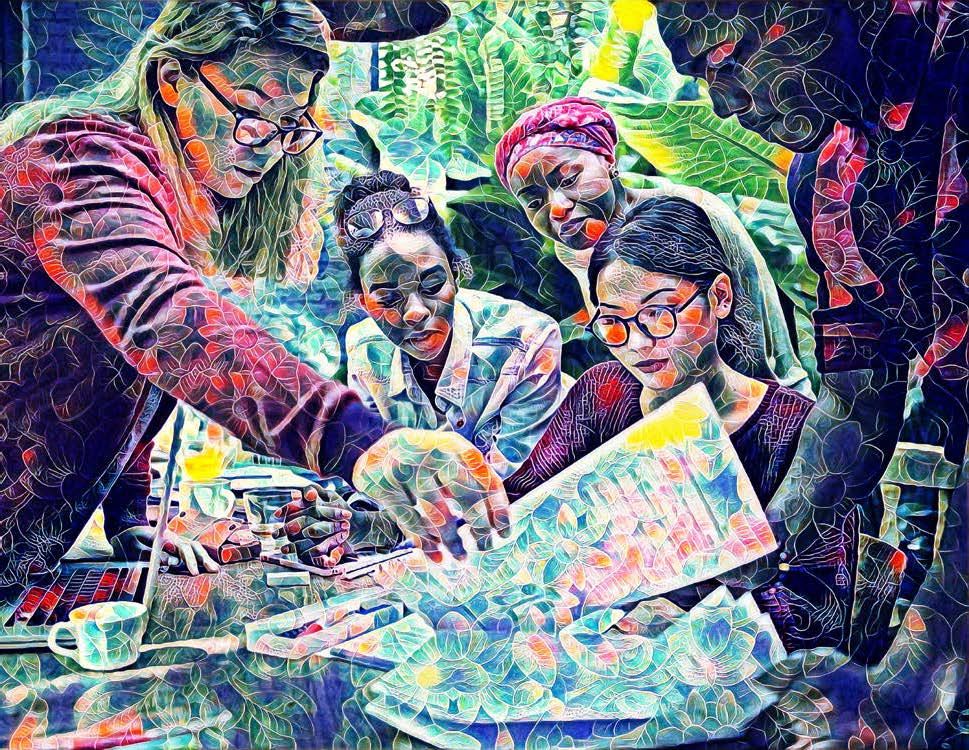Bold new approaches to transcend borders
Italy’s G7 agenda takes a macro approach, exemplifying the direction the G7 may pursue to reset the global agenda – and it is coming at a crucial moment, with much of the world still off course to meet the Sustainable Development Goals
How far and fast is the world progressing to meet the Sustainable Development Goals by 2030?
In many parts of the world, we are still off course and we are chronically underinvesting in the Sustainable Development Goals. The United Nations Development Programme’s Human Development Report 2023/2024 found that a significant recovery from the Covid-19 pandemic is largely confined to high-income countries. It is not yet a recovery for low-income and least developed countries. Many developing countries simply don’t have the fiscal space to advance their development priorities including investing in job creation, education, health or their digital public infrastructure, because they’re paying back interest on their debts.
Yet there are many positive signs. Investments in clean energy and net-zero transition strategies are now in the hundreds of billions of dollars. Last year, total investment in renewable clean energy infrastructure was some $1.8 trillion. And today around 5.5 billion people have internet access, compared to just one billion people in 2005. Digital is central to the energy transition, economic recovery, jobs and economic opportunities, so these are shining lights. Several countries will achieve many SDG targets and indicators by 2030. But as a global community, we have lost time and it is difficult to recover in such a short period.
How is UNDP working to reinforce progress?
Working alongside over 90 countries, UNDP produced SDG Insights Reports to pinpoint where their priorities coincide with, and differ from, the SDGs’ targets and indicators, and how to finance those priorities. With our partners, UNDP is also supporting over 80 countries in advancing Integrated National Financing Frameworks, which help them to see and leverage the full spectrum of available financing – domestic, international, concessional, public and private – to finance the SDGs.
As part of our Climate Promise initiative, UNDP is scaling up its support to over 125 countries to develop their third-generation climate pledges known as nationally determined contributions to be submitted in 2025 in advance of the UN climate change conference in Brazil. It is not only an unprecedented opportunity for all countries to play their part in limiting the global temperature rise to 1.5°C. NDCs are also a vital means to drive other national development objectives including job creation and poverty reduction. Problems such as climate change must be redefined as opportunities for investment for economic growth, as countries must meet their citizens’ aspirations while decarbonising their economies. To this end, many developing countries turn to UNDP as an implementing partner, including examining policy reforms, fossil fuel subsidies, regulatory frameworks for renewable energy investments and adaptation planning.
How is the Summit of the Future being designed?
Against the backdrop of a world more inclined towards confrontation than cooperation, trying to bring 193 countries around a drafting table to negotiate an outcome for the Summit of the Future is difficult. There are many things on which countries disagree, so we risk losing sight of the fact that there is much more on which countries concur. In this context, the UN secretary-general remains focused on an agenda for cooperation. The New Agenda for Peace and the Global Digital Compact will be unifying elements for the Summit of the Future and an antidote to a world drifting apart.
How will progress be affected by this year’s funding replenishments?
Development assistance overall has increased, but much of that increase focuses on support for Ukraine (8% of official development assistance) and in-country expenses for refugees (14%).
We hear much about ‘soft landings’ but for many developing countries, there may be hard ones, possibly including crashes with debt defaults. For many least developed countries, home to 40% of the world’s poorest people, and highly indebted middle-income countries, the international financial system has been unable to tackle the debt problem at the scale needed. The G7 and G20 carry some responsibility for this because in a world with more financial resources than at any point in human history, the 20% of the global economy not represented by the G20 risks paralysis and global economic and political insecurity without more assistance. A few countries in deep debt distress could have major consequences, including political destabilisation, polarisation, perhaps even violent conflict.
Therefore, to finance the SDGs including climate action and pandemic preparedness, we need to rethink how to attract more private-sector investment to drive the clean energy transition, digital public infrastructure and beyond. Africa’s needs alone are in the hundreds of billions of dollars just for the clean energy transition. You cannot have the wealthy recovering and the poor unable to invest in the very elements that would help them recover. Wealthy countries need to combine short-term measures to deal with the debt crisis with long-term measures to mobilise more public and private finance to invest in development that all agree is imperative, from decarbonisation to digitalisation.
How can G7 leaders at Apulia help?
Italy’s Apulia Summit agenda includes a focus on addressing the concerns of the Global South. Prime Minister Giorgia Meloni has already hosted an Africa summit and launched the Mattei Plan. The G7 will examine the many possibilities for co-investing to expand Africa’s electricity infrastructure, hydrogen, gas pipelines, renewable energies, schools, hospitals and agriculture. Migration is also a contested issue among G7 members. Therefore, Apulia is a timely moment to better understand its root causes and systemic responses. Italy’s inclusion of artificial intelligence on the agenda is also welcome, as we seek the right regulatory instruments to proactively respond to this revolution.
We are also months away from the next UN climate change conference in Azerbaijan, where global leaders can build a new global climate finance framework. To arrive without answers could derail today’s growing momentum on investing in decarbonisation and more inclusive development pathways.
In short, Italy has focused the agenda on shared interests rather than just addressing a narrower economic and political security agenda. This broader, macro approach exemplifies the direction the G7 may pursue to spearhead a global agenda reset with an emphasis on bolstering multilateral cooperation and reshaping financing and investment frameworks. This is pivotal to ensure that all countries can play their part in tackling existential challenges including climate change, which transcend borders and require bold new approaches that cross long-standing international divides.












